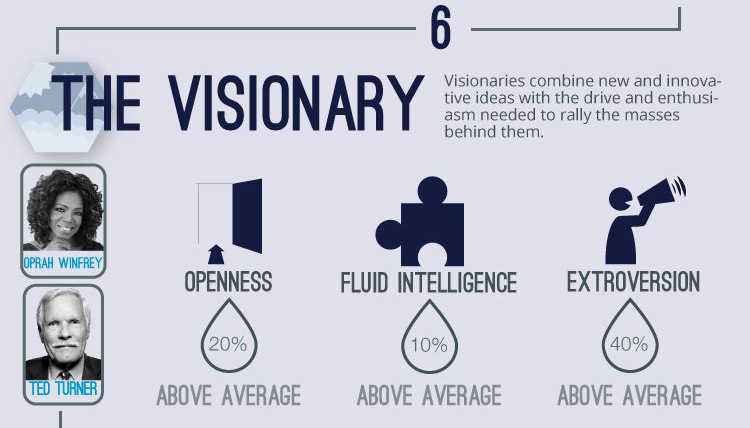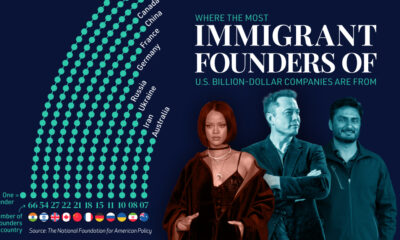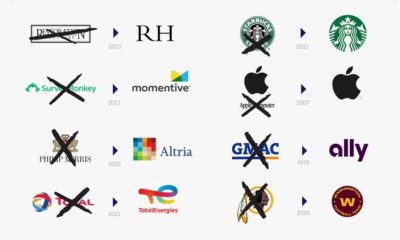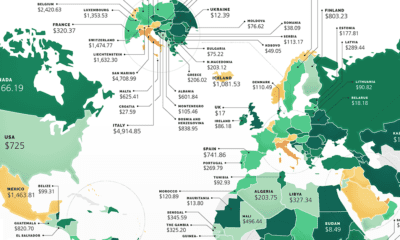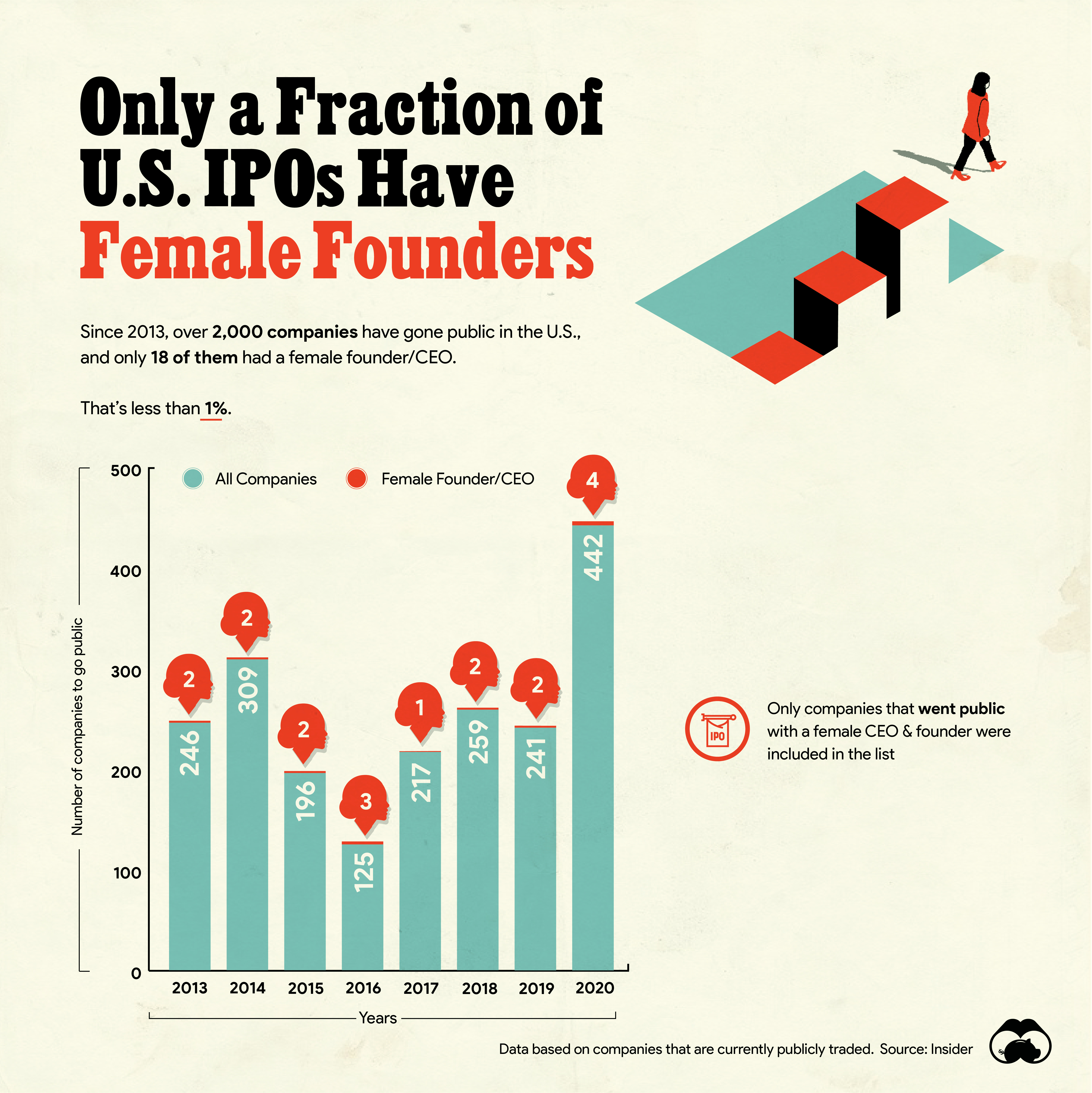Technology
The Six Ultra-Successful Types of Entrepreneurs
Entrepreneurs come in all shapes and sizes, but it turns out that the most successful ones can be grouped into six different personality profiles with certain traits in common.
This is according to the Founder Institute, a launch program for startups, which has worked with top social scientists to test over 30,000 entrepreneurs in correlating their working styles with the real-world results of thousands of companies.
See whether you fit the profile of a Visionary, Hustler, or Strategist below:

Breaking down these types of entrepreneurs further:
The Hustler
The Hustler is an enthusiastic go-getter who can sell just about anything. They are supremely confident and conscientious and won’t let anything stand in their way.
The Innovator
Always forward-thinking and adventurous, the innovator constantly seeks to challenge old ideas, and find new and unconventional ones.
The Machine
The Machine simply gets things done. Equipped with an aptitude for solving problems and a high level of efficiency, they always deliver quality, quickly.
The Prodigy
The Prodigy is blessed with an inborn business sense and instinct. Natural intellect, a stoic demeanor, and strong social skills help guide them to success.
The Strategist
A creative and tactical thinker, the Strategist is always calculating a game plan. Their habit of long-term thinking leads to success.
The Visionary
Visionaries combine new and innovative ideas with the drive and enthusiasm needed to rally the masses behind them.
While these six types of entrepreneurs are obviously very different in many ways, the one commonality is the ability to find success through a leadership style that is a unique fit for both the entrepreneur and the business.
That’s why Oprah Winfrey’s empire could not be built by Steve Jobs, and Bill Gates’ Microsoft could not be built by Zig Ziglar.
Which type of entrepreneur are you?
Original graphic by: Founder Institute
Technology
Visualizing AI Patents by Country
See which countries have been granted the most AI patents each year, from 2012 to 2022.

Visualizing AI Patents by Country
This was originally posted on our Voronoi app. Download the app for free on iOS or Android and discover incredible data-driven charts from a variety of trusted sources.
This infographic shows the number of AI-related patents granted each year from 2010 to 2022 (latest data available). These figures come from the Center for Security and Emerging Technology (CSET), accessed via Stanford University’s 2024 AI Index Report.
From this data, we can see that China first overtook the U.S. in 2013. Since then, the country has seen enormous growth in the number of AI patents granted each year.
| Year | China | EU and UK | U.S. | RoW | Global Total |
|---|---|---|---|---|---|
| 2010 | 307 | 137 | 984 | 571 | 1,999 |
| 2011 | 516 | 129 | 980 | 581 | 2,206 |
| 2012 | 926 | 112 | 950 | 660 | 2,648 |
| 2013 | 1,035 | 91 | 970 | 627 | 2,723 |
| 2014 | 1,278 | 97 | 1,078 | 667 | 3,120 |
| 2015 | 1,721 | 110 | 1,135 | 539 | 3,505 |
| 2016 | 1,621 | 128 | 1,298 | 714 | 3,761 |
| 2017 | 2,428 | 144 | 1,489 | 1,075 | 5,136 |
| 2018 | 4,741 | 155 | 1,674 | 1,574 | 8,144 |
| 2019 | 9,530 | 322 | 3,211 | 2,720 | 15,783 |
| 2020 | 13,071 | 406 | 5,441 | 4,455 | 23,373 |
| 2021 | 21,907 | 623 | 8,219 | 7,519 | 38,268 |
| 2022 | 35,315 | 1,173 | 12,077 | 13,699 | 62,264 |
In 2022, China was granted more patents than every other country combined.
While this suggests that the country is very active in researching the field of artificial intelligence, it doesn’t necessarily mean that China is the farthest in terms of capability.
Key Facts About AI Patents
According to CSET, AI patents relate to mathematical relationships and algorithms, which are considered abstract ideas under patent law. They can also have different meaning, depending on where they are filed.
In the U.S., AI patenting is concentrated amongst large companies including IBM, Microsoft, and Google. On the other hand, AI patenting in China is more distributed across government organizations, universities, and tech firms (e.g. Tencent).
In terms of focus area, China’s patents are typically related to computer vision, a field of AI that enables computers and systems to interpret visual data and inputs. Meanwhile America’s efforts are more evenly distributed across research fields.
Learn More About AI From Visual Capitalist
If you want to see more data visualizations on artificial intelligence, check out this graphic that shows which job departments will be impacted by AI the most.
-

 Mining1 week ago
Mining1 week agoGold vs. S&P 500: Which Has Grown More Over Five Years?
-

 Markets2 weeks ago
Markets2 weeks agoRanked: The Most Valuable Housing Markets in America
-

 Money2 weeks ago
Money2 weeks agoWhich States Have the Highest Minimum Wage in America?
-

 AI2 weeks ago
AI2 weeks agoRanked: Semiconductor Companies by Industry Revenue Share
-

 Markets2 weeks ago
Markets2 weeks agoRanked: The World’s Top Flight Routes, by Revenue
-

 Countries2 weeks ago
Countries2 weeks agoPopulation Projections: The World’s 6 Largest Countries in 2075
-

 Markets2 weeks ago
Markets2 weeks agoThe Top 10 States by Real GDP Growth in 2023
-

 Demographics2 weeks ago
Demographics2 weeks agoThe Smallest Gender Wage Gaps in OECD Countries
